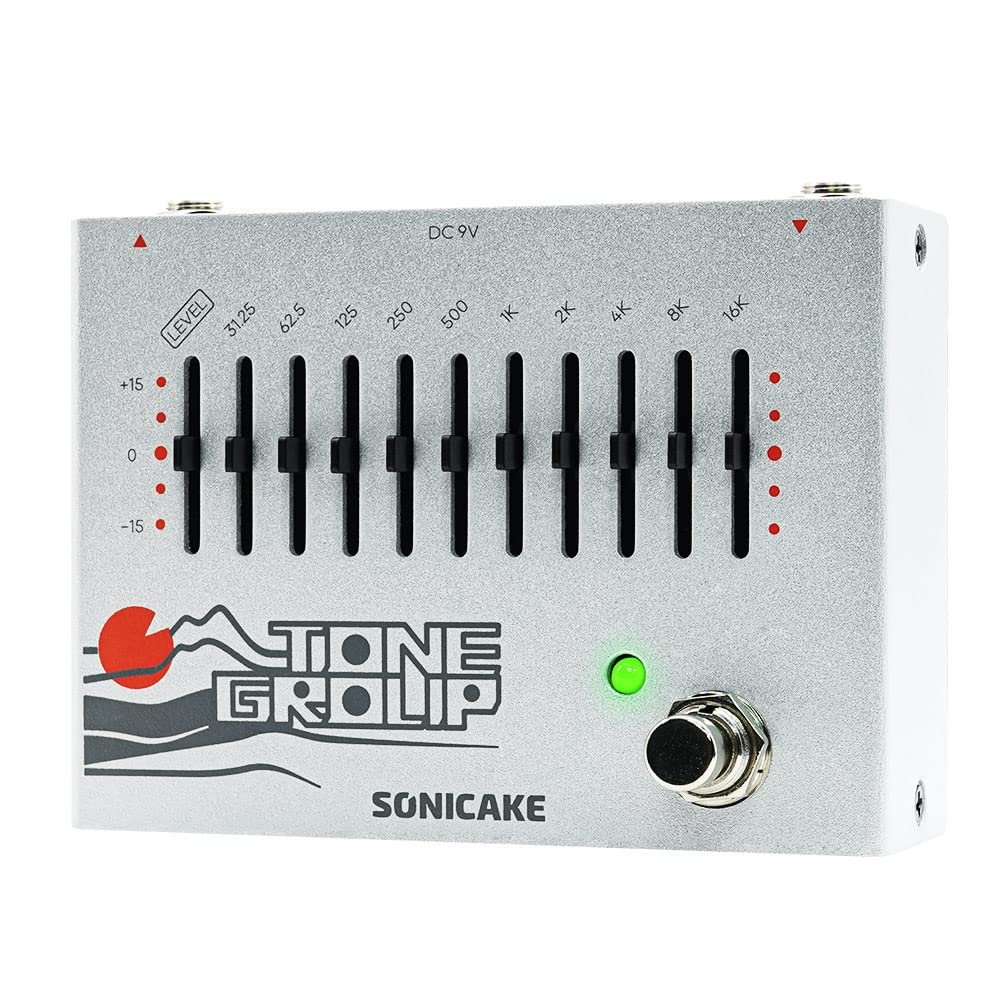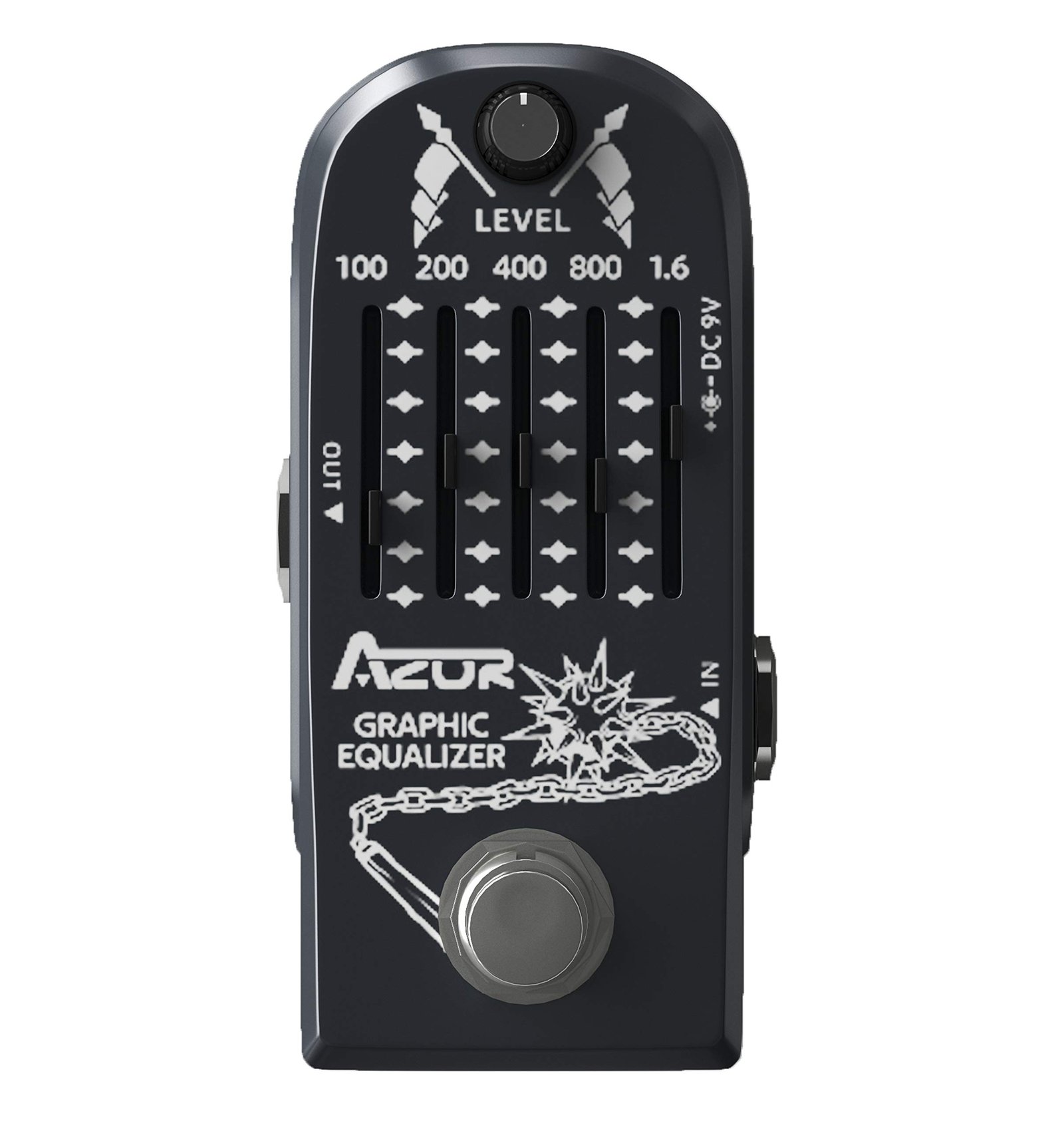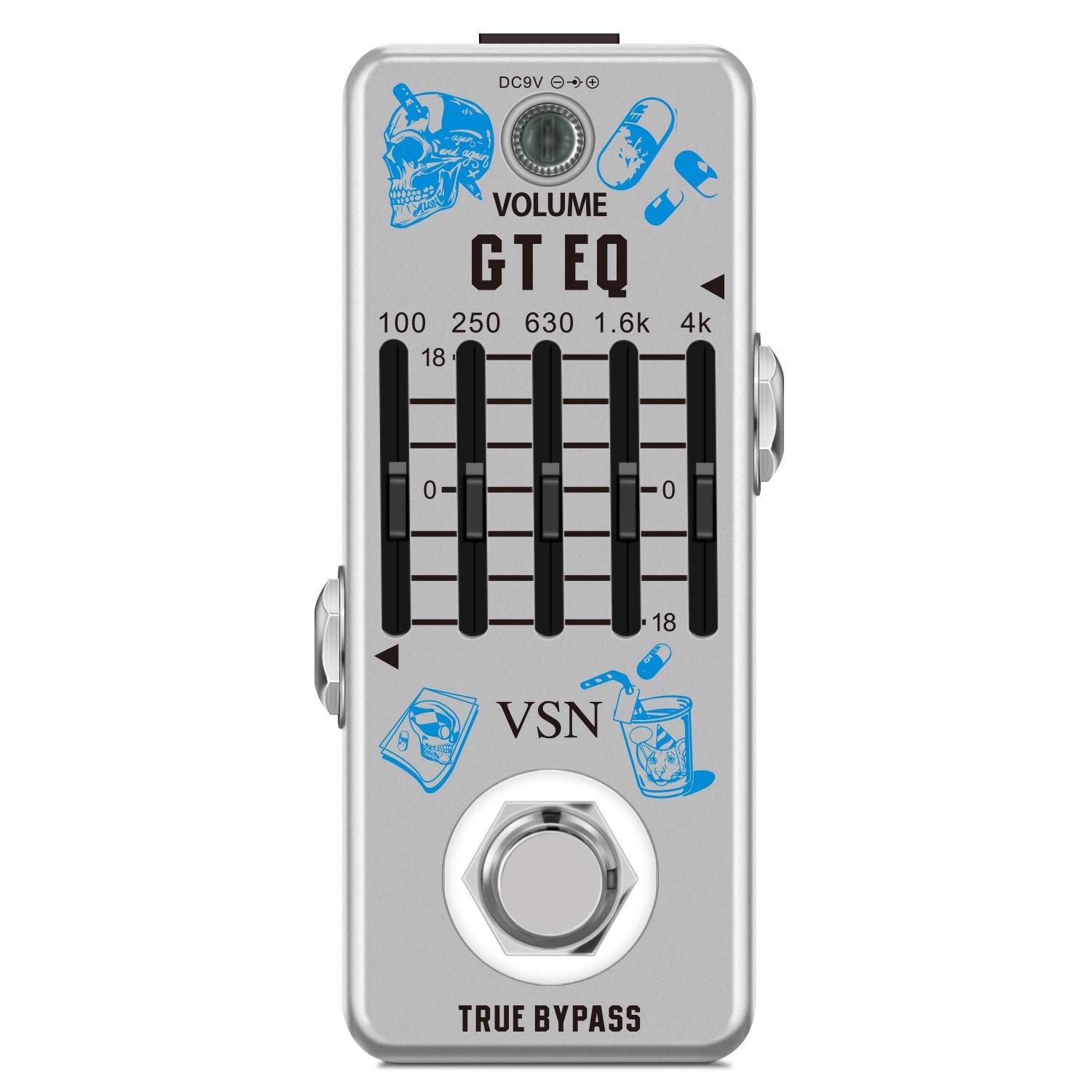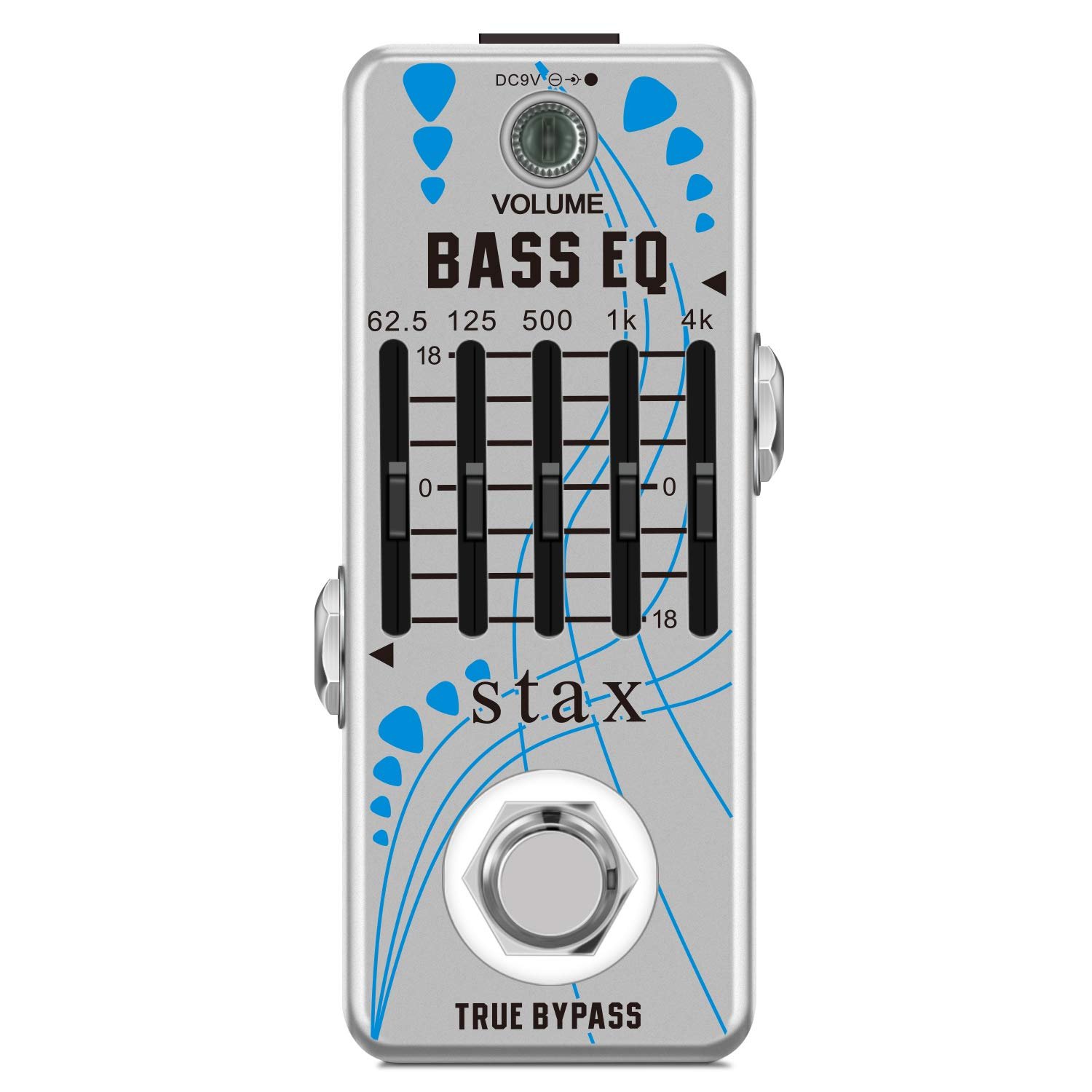Equalization (EQ) pedals are important tools for guitarists and musicians looking to shape their sound.
They give you the ability to boost or cut specific frequencies, helping to create a tone that fits your style.
Whether you’re playing live or recording in the studio, the right EQ pedal can make a big difference in how your instrument blends with the music.
When looking for an EQ pedal, you’ll find different types and features.
Some pedals have multiple frequency bands, while others focus on a few key ranges.
It’s important to think about how many bands you need, the layout of the controls, and if you want a pedal that can be used in various settings, like live shows or at home.
Pay attention to things like build quality and power options too.
You want something durable that can handle being stepped on during performances.
The versatility of the EQ pedal you choose can really affect your final sound, making it worth the time to pick the right one.
Let’s explore the top choices available and find the best EQ pedal for your tone-shaping needs.
Top 5 EQ Pedals for Tone Shaping
If you want to take your guitar sound to the next level, EQ pedals are a great tool to shape your tone.
Here’s a list of the top five EQ pedals that can help you get closer to that perfect sound you’ve been searching for.
Whether you’re playing live or recording, these pedals can make a big difference in your overall tone.
SONICAKE EQ Equalizer
This EQ pedal offers a lot of features, making it a solid choice for shaping your sound.
- 10 bands for detailed tone shaping.
- True bypass preserves your original signal.
- Affordable and versatile for different instruments.
- Requires a separate power supply.
- Might feel a bit tricky for beginners.
- A little bulky for some pedalboards.
The SONICAKE EQ Equalizer is an analog 10-band equalizer that can help you sculpt your tone just how you want it.
It has adjustable gain for each band, so you can boost or cut frequencies to fit your style.
The 11 sliders let you tweak settings quickly, making it easy to create the perfect sound.
This pedal is true bypass, which means it won’t color your tone when it’s not in use.
For those who want to keep their sound pure, that’s a great feature.
You can connect it with most instruments, giving it wide-ranging appeal.
While there’s much to love, some might find it requires a learning curve.
It does need a power supply that you’ll have to purchase separately.
Overall, this pedal stands out for its price and capabilities, making it worth considering for your effects setup.
Behringer EQ700
This EQ pedal offers great sound shaping options for an affordable price.
- Seven bands for detailed sound control.
- Boost or cut frequencies by up to 15 dB.
- Compact and easy to use.
- Build quality may not be as durable as higher-end models.
- True bypass isn’t available, which affects the signal when off.
- Limited power options, as it requires a separate power supply or battery.
With the Behringer EQ700, you can tailor your guitar or keyboard sound to your liking.
The seven bands let you adjust the tone from 100 Hz to 6.4 kHz, helping you create a signature sound.
This control allows you to enhance your gear’s quality and tackle unwanted feedback effectively.
The compact design makes it easy to fit on your pedalboard.
Since it runs on a 9V battery or an optional power supply, you have some flexibility.
Users appreciate how this pedal can change their sound, making it a useful addition to your setup.
While it’s budget-friendly, be aware that the build is mainly plastic.
Some players have concerns about the durability over time.
Also, it’s worth noting that it’s not a true bypass pedal, which means it can slightly alter your sound when switched off.
Overall, this EQ pedal is a solid choice for those looking to experiment with tone without breaking the bank.
AZOR 5 Band EQ Pedal
This compact pedal offers solid features for shaping your guitar sound effectively.
- Full control over frequencies with five bands.
- Sturdy design ideal for transport.
- Affordable option for quality sound.
- May not meet needs for professionals.
- Limited tonal depth for advanced users.
- Small knobs might be tricky for some.
The AZOR 5 Band EQ Pedal is designed to help you tweak your sound.
With five frequency bands ranging from 100Hz to 1.6kHz, you can adjust each band by up to 18dB.
This gives you plenty of room to find just the right tone for your style.
One standout feature is the LEVEL knob, allowing you to manage your overall volume.
The pedal’s sturdy aluminum alloy casing means it can handle some travel and rough handling.
If you’re looking for something budget-friendly that also packs a punch, this mini-pedal can fit nicely on any pedalboard.
While it offers great value, it may not be the best fit for everyone.
Some users might find it lacks depth for more advanced setups.
In addition, if you’re used to larger controls, the small knobs may take some getting used to.
For home practice or small gigs, the AZOR 5 Band EQ is a solid choice.
VSN EQ Pedal
This EQ pedal is a solid choice for shaping your guitar tone with ease and precision.
- Five frequency bands to customize your sound.
- Built with a true bypass for minimal tone loss.
- Compact and sturdy design for portability.
- Requires a separate power adapter which isn’t included.
- Some find the sliders a bit challenging to adjust.
- May not be suitable for all effects setups.
The VSN EQ Pedal offers five frequency bands: 100Hz, 250Hz, 630Hz, 1.6kHz, and 4kHz.
This flexibility helps you tailor your sound just the way you like it.
You get a gain range of ±18dB for each band, letting you boost or cut frequencies as needed.
Portability is a plus here.
The pedal is built from solid aluminum with a neat finish.
It’s easy to take to gigs without worrying about damage.
The true bypass feature ensures your tone remains clear while using it.
While it’s great that the pedal is compact, keep in mind it does not come with a power adapter.
Also, some users may find the sliders a little tough to manage.
Still, it can be a helpful tool for carving out your distinct sound in different setups.
Stax Bass EQ Pedal
This compact pedal is a solid pick if you want to shape your bass tone without a lot of fuss.
- Small and lightweight for easy transport
- Five adjustable frequency bands for versatile sound
- True bypass for clear tone when off
- Power adapter not included
- Some users report size is smaller than expected
- Limited to bass; may not suit all instruments
The Stax Bass EQ Pedal packs a lot into its small design.
It features five frequency bands that let you boost or cut specific sounds.
This gives you the ability to sculpt your bass tone just the way you like it.
The adjustable gain allows for fine-tuning, catering to both subtle changes and more dramatic shifts.
Made with a strong zinc alloy shell, this pedal is built to last.
Yet, it remains very portable, making it suitable for gigs or jam sessions.
No need to worry about unwanted noise either, thanks to its true bypass feature.
Keep in mind that the power supply is not included, which might be an inconvenience.
A few users note its mini size could take some getting used to, but when you want a pedal that fits seamlessly into your gear, this one hits the mark.
Buying Guide
Choosing the right EQ pedal can really make a difference in your sound.
Here are some important points to think about.
Key Features to Consider
| Feature | Description |
|---|---|
| Type | Decide between graphic and parametric EQs. Graphic EQs let you adjust fixed frequencies, while parametric ones offer more flexibility. |
| Number of Bands | More bands give you finer control. Common options range from 5 to 31 bands. |
| Frequency Range | Look for pedals that cover the frequencies you want, especially lows and highs. |
| Build Quality | Solid construction means it can handle regular use. Check materials and durability. |
Other Things to Look At
- Size and Weight: A compact, lightweight pedal is easier to carry if you travel a lot.
- Power Source: You should check if it needs a battery or if it can be powered by a power supply.
- User Interface: Simple controls can make adjusting settings easier mid-performance.
Think about your musical style too.
Some pedals are better for rock, while others shine in jazz or blues.
Your personal taste and playing style can guide your choice.






